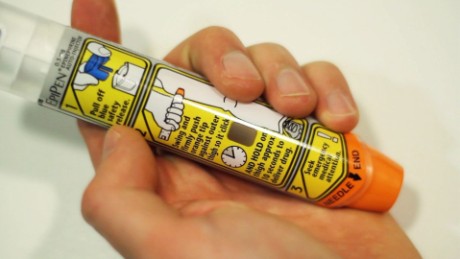
This past summer, pharmaceutical scandal erupted over the skyrocketing price
of EpiPens, epinephrine auto-injectors used to treat anaphylactic shock. The devices are now sold as a two-pack for
$600 when they were sold for $57 dollars each in 2007 before Mylan Pharmaceuticals
purchased the rights to EpiPen. Despite the congressional hearing last month,
there has yet to be anything done to effectively bring the price down for people who
need these life-saving devices. There has, however, been some investigation into
how EpiPens actually work and even attempts to make them at home for much
cheaper.
The EpiPen works via a spring loaded mechanism. The EpiPen has two
springs: the spring around the plunger and the spring that pushes out the
needle sheath. Both are compressed until a person presses the EpiPen against
their thigh. This leads to the springs being released which projects a needle that
breaks the skin’s surface so that the dose of epinephrine may exit the EpiPen.
The larger spring that provided the power for the injection had a calculated
spring constant of 8.65 lbs/in. This is 0.977 N/m. That spring is 3 inches long
and we will assume that it is compressed to half its size, so 1.5 inches or
0.0381 m. That means that the PE stored in the spring = .5(0.977 N/m) (-0.0381m)2
or 0.00071 J. Not all that much to save a life!
No comments:
Post a Comment
Note: Only a member of this blog may post a comment.